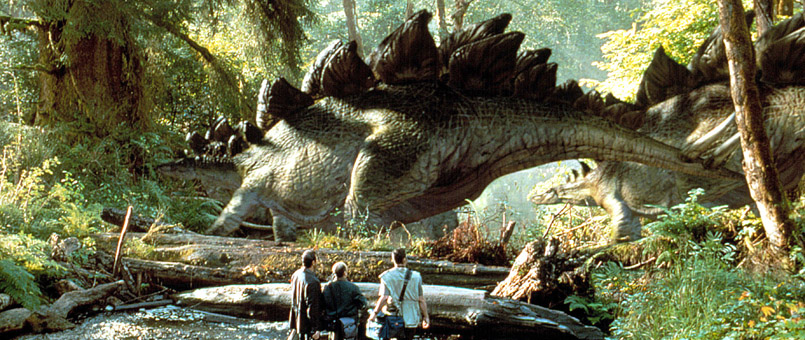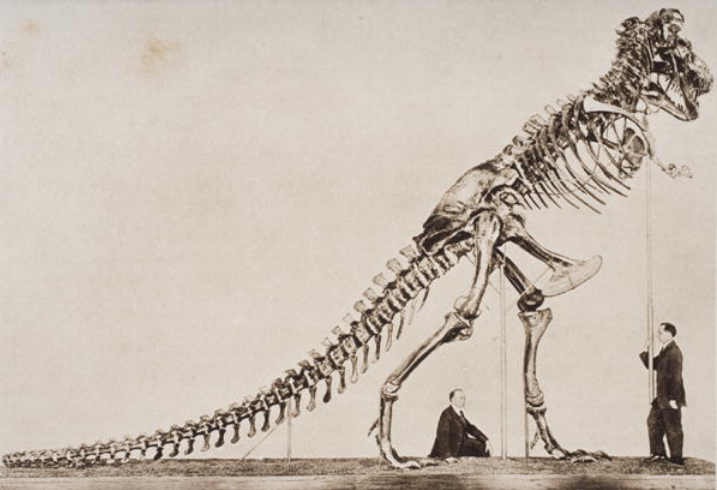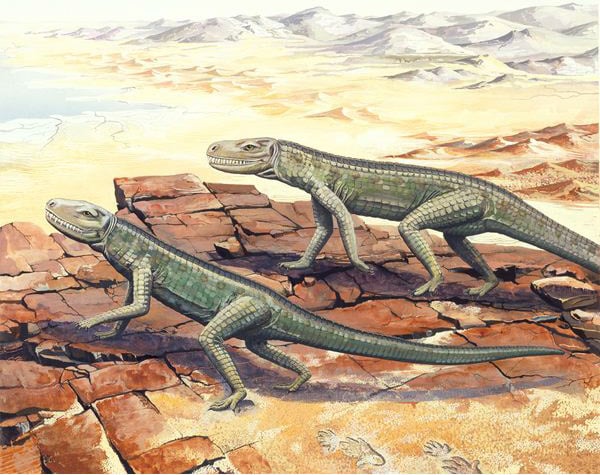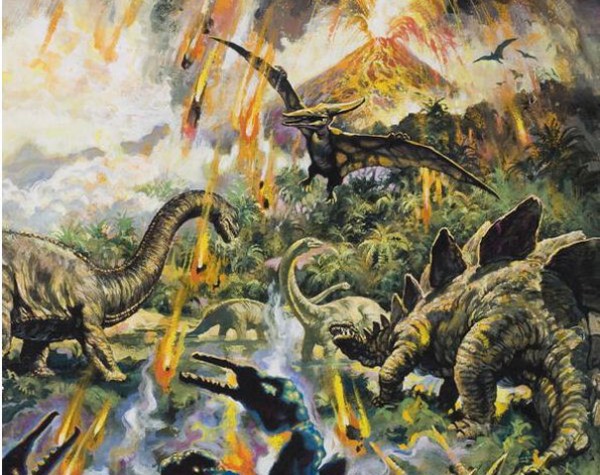
Dinosaurs Rule: Unearth a Prehistoric World in Pictures
Fossils and modern technology have helped us piece together what dinosaurs may have looked like, but if you learned everything about the prehistoric creatures from Hollywood, you might not know as much as you think.
Here are some interesting facts brought to life via illustrations in the Bridgeman archive.
Evolution
Dinosaurs weren’t always the most fearsome reptiles on earth. The first dinosaurs evolved in the middle-late Triassic period 230 million years ago, yet prehistoric crocodiles were actually the most dominant for around 20 million years after that. It was only at the start of the Jurassic period, 200 million years ago, that the dinosaurs began their reign.
Most of the dinosaurs in the first Jurassic Park film and book are not even from the Jurassic period of history. Crichton explained this by asking whether ‘Cretaceous Park’ would have sounded as cool. Perhaps not.
Defining ‘Dinosaur’
The word ‘dinosaur’ in fact only applies to land-dwelling reptiles that have a particular hip and leg structure, or other relevant anatomical characteristics. Even though there were many other equally impressive creatures like the swimming plesiosaurs or the flying pterosaurs, they were not technically dinosaurs. Some were not even closely related, besides the fact that they are also reptiles.
All Shapes and Sizes
Scientists have identified thousands of individual dinosaur species, which can generally be assigned to 15 major family groups. These range from the ceratopsians (horned, frilled), to the ankylosaurs (armoured), to the ornithomimids (‘bird-mimic’ dinosaurs).
Paleontologists do not divide dinosaurs into carnivores and herbivores, but rather distinguish between the saurischian (‘lizard-hipped’) and the ornithischian (‘bird-hipped’) breeds.
Do you remember the venom-spitting dilophosaurus in the Jurassic film? That ability was completely made up by Michael Crichton for dramatic effect, and it did not have a frilled neck either.
Who Ruled the Roost?

Millions of Years Ago: Monsters Too Large to Survive, English School, (20th C) / Private Collection / © Look and Learn
Giant predators like the fierce Tyrannosaurus Rex and the Giganotosaurus are always the big names in media, but it’s a fact of nature that meat-eaters of any ecosystem are tiny in number in relation to their plant-eating prey. The herbivores probably roamed the continent in vast herds, hunted by individual or sparser groups of carnivores.
Beware of Birds…

Feathered dinosaurs prepare to lift off in flight (colour litho), Sibbick, John (20th century) / National Geographic Creative / National Geographic Creative
Ever notice how birds have suspiciously reptilian feet? Although there is still a debate amongst paleontologists, the bulk of evidence indicates that modern birds evolved from small, feathered, theropod dinosaurs during the late Jurassic and Cretaceous periods. This is not the case for the four-winged microraptor however, as it left no living descendants.
They might resemble birds, but what did they sound like? The Jurassic Park producers had to face the problem of creating dinosaur cries for the films, since there are no real world examples to work with. Funnily enough, the raptor cries started off as noises made by turtles during sex… and the T-Rex’s titanic growl was apparently based on that of a baby elephant, and according to some sources, penguins.
Who’s got the Brains and Brawn?
Some plant eating dinosaurs such as the stegosaurus had such tiny brains compared to the rest of their bodies that they must have only been a little more intelligent than giant ferns. Predatory dinosaurs as a whole possessed more respectable amounts of grey matter as they relied on an enhanced sight, agility, smell and co-ordination in order to hunt they prey. That said, even they were no more intellectual than a present day ostrich.
Extinction
Most people believe that when the meteor impacted the Yucatan Peninsula 65 million years ago, the huge fireball immediately incinerated all the dinosaurs on earth. This was not the case, as the process dragged on for hundreds and maybe thousands of years, as plummeting global temperatures, and lack of sunlight or vegetation dramatically altered the entire food chain.
Thanks to paleontology we know more about these creatures than we do some of humankind’s own history. Unfortunately there is minimal chance that we will ever be able to see a real dinosaur again in our lifetimes, however they live on through their evolved descendants. Jurassic World is at least ‘scientifically more plausible than its predecessors’ as it deals with genetic engineering rather than the retrieval of dinosaur DNA.
Species Success

Skeleton of the Tyrannosaurus Rex, in the American Museum of Natural History, from ‘The Outline of History’ by H.G. Wells, Volume I, published in 1920, English School, (20th C) / Private Collection / Ken Welsh
Modern humans have only been around for a few hundred thousand years, and civilization only really began about 10,000 years ago. As such, it is difficult for us to comprehend ‘deep time’, as we lived in just a blink of the eye by Jurassic time scales. People discuss how dramatically the dinosaurs went extinct, but judging by how they managed to survive for 150 million years, they could have been the most successful creatures to have ever colonized the earth.
Can you imagine trying to survive in a world alongside dinosaurs?
Sources
* ’18 Things you Probably Didn’t Know about Jurassic Park’, gizmodo.co.uk. Retrieved 11th June 2015.
* ‘The 10 Most Important Dinosaur Facts’, dinosaurs.about.com. Retrieved 11th June 2015.
Find out More
Top Ten UK Dinosaur Attractions
Images for Licensing
An incredibly diverse range of dinosaur illustrations can be sourced from the Look and Learn and the Natural History Museum collections in the Bridgeman archive. For the majority of these images, no further copyright clearance is needed.
Get in touch with the Bridgeman team on uksales@bridgemanimages.com with enquiries about licensing and clearing copyright.
Save





